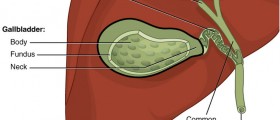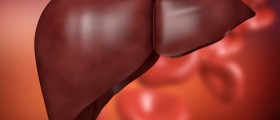Primary sclerosing cholangitis is a medical condition affecting the bile ducts of the liver. Bile ducts get inflamed and as a result, there is hardening and scarring of these structures.
Liver Cirrhosis and Liver Failure
Primary sclerosing cholangitis is progressive disease and due to severe damage to bile ducts the person eventually develops liver cirrhosis which subsequently leads to liver failure. The only way to help patients in terminal stage of the disease is to provide a liver transplant.

Unfortunately, there is no cure for the disease. The goal of current treatment is to slow down and reverse damage induced by inflammation. So treatment is basically symptomatic and it also prevents potential complications.
Primary Sclerosing Cholangitis Clinical Characteristics
Patients suffering from primary sclerosing cholangitis typically complain about abdominal pain of different intensity, fatigue, sometimes chills and fever. They also have to deal with frequent bouts of diarrhea. There is evident weight loss which accompanied lack of appetite. Jaundice points to damage to the liver and accumulation of bile under the skin are accompanied by yellowing of the skin and itchiness. As is the case with jaundice induced by other causes there is also yellowing of the whites of the eyes.
In the initial stage of the disease there are no symptoms and signs and only by routine examination and test doctors may identify inadequate liver function and during further search for the underlying cause confirm the disease.
Primary Sclerosing Cholangitis Causes
Scientists have not managed to identify the actual cause of sclerosing cholangitis yet. However, it is believed that the trigger may be some infection or exposure to a toxin both of which may induce an abnormal immune system reaction and initiate inflammation of bile ducts. The very condition is also reported in people who are already suffering from certain illnesses like inflammatory bowel disease.
Primary Sclerosing Cholangitis End Stage and Complications
Complications of the disease are most commonly seen when the disease has significantly progressed and they are characteristic for end stage of primary sclerosing cholangitis.
Liver disease and liver failure are inevitable complications which develop after certain period of time. Scarring of the liver becomes severe enough and the organ loses its ability to regenerate. As a result, patients end up with liver failure. The only way to survive is to undergo liver transplantation. Portal hypertension is a complication closely associated with liver failure. It is a serious medical issue that leads to esophageal varices. These may easily bleed and cause even more problems.
Repeated infections in the bile ducts are another complication of the disease. Furthermore, such patients are at higher risk for osteoporosis due to a lack of calcium ad vitamin D.
Finally, primary sclerosing cholangitis increases chances for one to develop two types of cancer, bile duct cancer and colon cancer.
- Prevalence of PSC differs from 1 to 16 per 100,000 in different societies, and its incidence differs from 1 to 1.3 cases per 100,000. Approximately 70% of patients with PSC have underlying IBD, and prevalence of PSC-IBD has been estimated 24 per 100,000, though the statistics are not accurate because of the varying diagnostic criteria.
- The prolonged duration of IBD in PSC-IBD patients seemingly increases the risk of developing CCA and CRC. Annually, 0.5% to 1.5% of patients with PSC develop CCA with the lifetime incidence of GBC and HCC in patients with PSC estimated to be 3%-14% and 0.3%-8%, respectively.
- There is insufficient data about pancreatic cancer, but it is suggested to be 14 times higher than the healthy population in PSC patients. Altogether, the frequency of hepatobiliary malignancies in patients with PSC is estimated 13%.
- Blocked bile ducts lead to an increased susceptibility to progressive biliary fibrosis, biliary cirrhosis, and eventually liver failure. Inflammation of the bile ducts and scars in these ducts can make the patient susceptible to cholangiocarcinoma. Also, with chronic inflammation of the bile ducts, the risk of gallbladder epithelial dysplasia and gallbladder neoplasia increases.
- Unfortunately, PSC pathogenesis is poorly understood; thus, PSC is generally considered as an idiopathic disease and there are few therapies available for it. Generally, the most effective treatment of PSC is liver transplantation, but there are also studies suggesting that medication therapy may have a positive effect in modifying the disease.
- Although there is no specific treatment for PSC, many studies have reported that some immunosuppressants and immunomodulatory drugs, antibiotics, and anti-inflammatory drugs can help control the disease and its complications. Studies are suggesting that controlling and normalizing levels of alkaline phosphatase in the long-term would improve survival and reduce the risk of requiring liver transplantation

















Your thoughts on this
Loading...